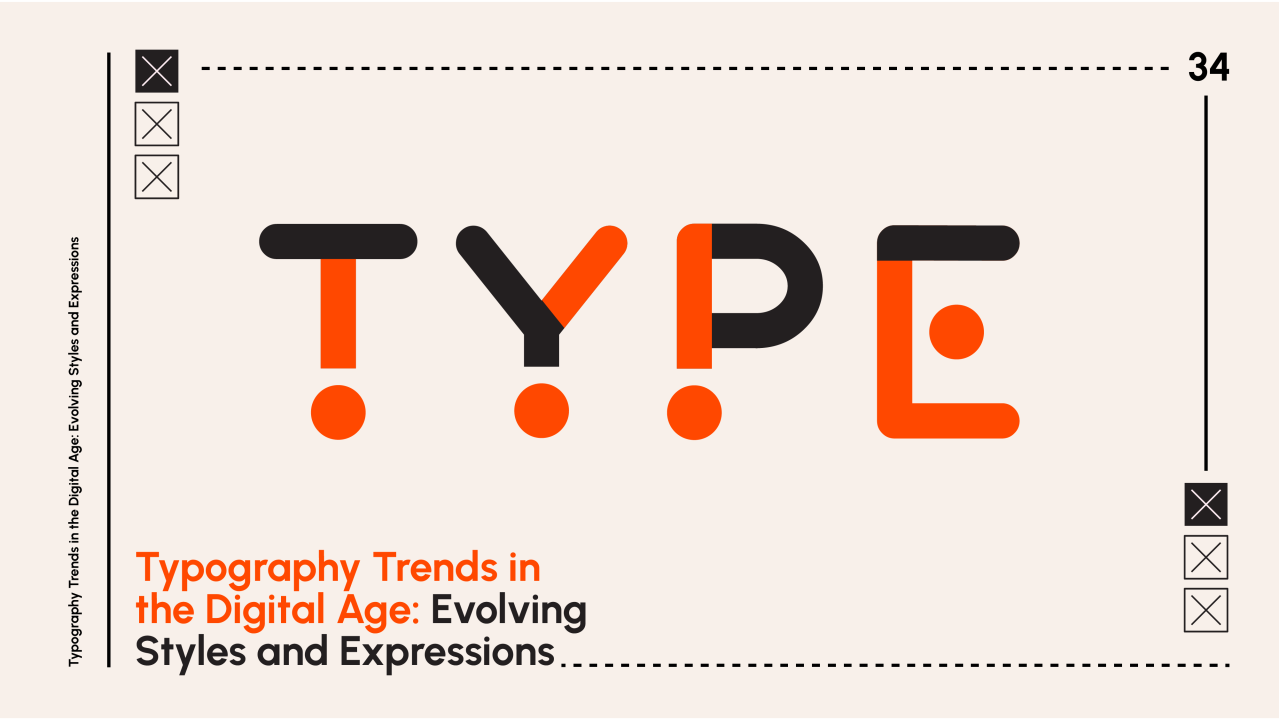
Typography Trends in the Digital Age: Evolving Styles and Expressions
Typography, the art and technique of arranging type to make written language readable and appealing, has undergone a transformative journey in the digital age. With the advent of technology, the canvas for typographic expression has expanded exponentially, influencing design, communication, and user experience across various digital platforms.
Evolution of Typography in the Digital Era
Historical Perspective
Typography, historically rooted in print, evolved from handwritten manuscripts to movable type printing, revolutionising communication. The digital revolution further accelerated typography's evolution, introducing limitless possibilities for type design, layout, and accessibility.
Impact of Technology
Advancements in technology, especially the rise of responsive web design and mobile devices, have redefined typography's role in digital communication. The need for legibility across various screen sizes prompted designers to experiment with fonts, sizes, and spacing for enhanced readability and user experience.
Typography as a Branding Tool
Typography plays a pivotal role in branding, reflecting a brand's identity, personality, and values. Companies invest in custom typefaces (1) to distinguish themselves in a saturated digital landscape, aiming for unique visual identities that resonate with their audience.
Trends Shaping Typography in the Digital Age
Minimalism and Clean Fonts
The 'less is more' approach has gained traction in digital typography. Clean, minimalist fonts with ample whitespace offer readability and a modern aesthetic. Sans-serif fonts like Arial and Helvetica dominate this trend due to their simplicity and legibility, especially on screens (2).
Variable Fonts and Dynamic Typography
The emergence of variable fonts (3) revolutionised typography by allowing a single font file to contain multiple variations in weight, width, and style. This technology enables dynamic typography, empowering designers to create responsive and adaptable text that adjusts seamlessly across devices and screen sizes.
Bold and Expressive Typography
Designers are increasingly embracing bold, expressive typography to create impactful visual narratives. Custom typefaces, decorative fonts, and creative typography treatments are used to evoke emotions, highlight key messages, and captivate audiences in a crowded digital space.
Experimental and Artistic Typography
The digital age fosters experimentation, leading to the exploration of artistic and unconventional typography. Designers push boundaries by integrating hand-drawn elements, mixed-media typography, and innovative layouts, adding depth and personality to digital content.
Accessibility and Inclusive Design
Inclusivity in design has become a central focus, prompting the integration of accessible typography practices (4). Designers are prioritizing legibility, contrast, and font size variations to ensure content is easily comprehensible for diverse audiences, including those with visual impairments.
Typography Statistics in the UK
Typography trends in the UK reflect global shifts in design preferences and technological advancements. According to a survey conducted by a leading design publication, over 70% of UK-based designers consider typography a crucial element in their design process (5). Additionally, more than 60% of businesses in the UK invest in custom typography to strengthen their brand identity (6).
Future Directions and Conclusion
As we continue navigating the digital landscape, typography will continue evolving, influenced by technology, culture, and design trends. The convergence of augmented reality, virtual reality, and artificial intelligence may further revolutionize typography, creating immersive and interactive typographic experiences.
In conclusion, typography in the digital age is a dynamic and integral aspect of design and communication. The evolution of technology and design trends continues to shape typography, offering boundless opportunities for creative expression and effective communication across diverse digital platforms.
[1] Custom typefaces: https://www.creativereview.co.uk/why-brands-are-investing-in-custom-typefaces/ [2] Sans-serif fonts: https://www.fontsmith.com/blog/understanding-screen-fonts-web-design [3] Variable fonts: https://www.typenetwork.com/learn/variable-fonts/ [4] Accessible typography practices: https://www.nomensa.com/blog/2017/7-tips-for-creating-accessible-typography [5] UK typography survey: https://www.designweek.co.uk/issues/12-18-march-2018/whats-driving-todays-design-trends/ [6] Businesses investing in custom typography: https://www.printweek.com/print-week/news/1165055/over-two-thirds-of-businesses-invest-in-custom-fonts

James Griffin is a Graphic Designer of a full service digital marketing agency supporting a national audience with web design and development, search engine marketing, social media management, hosting and email services.
For more information about our services or advice on how to improve your online marketing activities please reach out and connect with us via our website or our social media channels.
AI-Powered Ad Creative Specialist | Marketing Expert
4mohttps://free-trial.adcreative.ai/0oo3s1khmaeu